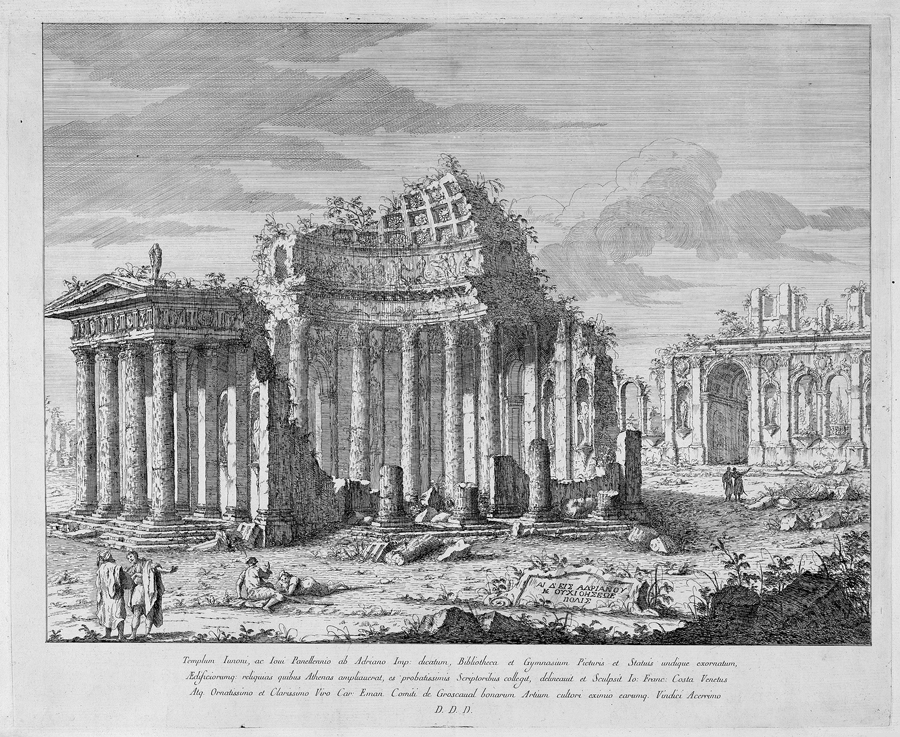Loading the page ...
Giovanni Francesco Costa
(1711–1772, Venice)
The Temple of Juno and Jupiter. Etching, printed on a firm Venetian laid paper. 45.9 x 56.2 cm. (1748). R. M. Mason, “Les eaux-fortes archéologiques de Gianfrancesco Costa, Vénitien”, Genava, vol. XXV, 1977, p. 255, C 1 I (of II); Mason, Une Venise imaginaire, 1991, 75 I (of II). Watermark: Crossbow (cf. Bromberg, Canaletto, 3).
The painter, architect, stage designer and etcher Gianfrancesco Costa was a widely educated and assiduous personality who also distinguished himself as an art theoretician. His thirst for learning and ability to make his mark in a wide variety of fields are a reflection of the 18th century zeitgeist. Costa had begun his career as a stage designer in Padua in the late 1730s and subsequently pursued various activities in Vicenza, Venice and Turin, where he was associated with the well-known Teatro Regio. Costa’s range of interests was extensive and he occasionally abandoned his profession as set designer to pursue other occupations. In 1747 he published his treatise Elementi di prospettiva before turning to printmaking a few years later. As a printmaker Costa is chiefly known for his Delle delicie del fiume Brenta, which he published in two parts between 1750 and 1756. This was a set of etchings comprising 136 views of palazzi and villas along the River Brenta, which turned out to be a great success with the public, running through several editions.
Our view of the Temple of Juno and Jupiter dates from a slightly earlier phase and is the first sheet of an extremely rare set of four architectural capriccios entitled Suite des plus célèbres bâtiments de la Grèce, which Costa produced in 1748. The portrayal is remotely reminiscent of the etched architectural capriccios of Marco Ricci, although a direct comparison reveals it to be more modest and less concentrated in terms of the technical treatment. The sky is indicated no more than schematically by means of parallel lines and simple cross-hatchings. By contrast Costa’s linework in rendering the architectural details of the classical ruins is much more versatile and subtle, cleverly conveying a typically Venetian sense of atmosphere. Clear sunlight lends the scene a touch of serenity, and the staffage figures quietly dedicate themselves to dolce-far-niente. The idyllic antique remains are overgrown with weeds, testifying to the then prevalent taste for the picturesque, which gives them more an air of ephemeral stage sets than solid masses of masonry.
A superb and rich early impression with margins around the platemark, before the complete reworking of the plate with the burin and before the artist’s name and the address of the publisher Wagner. In impeccable condition.
